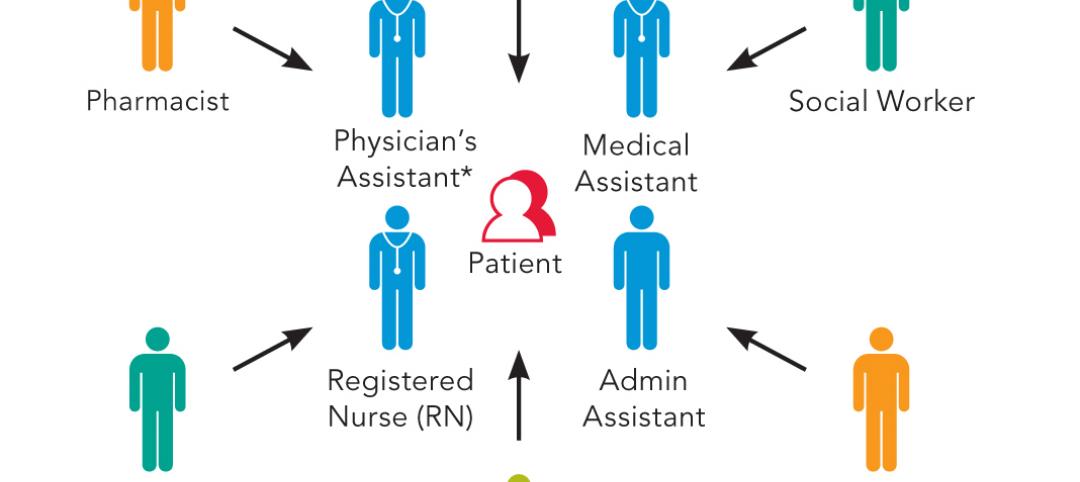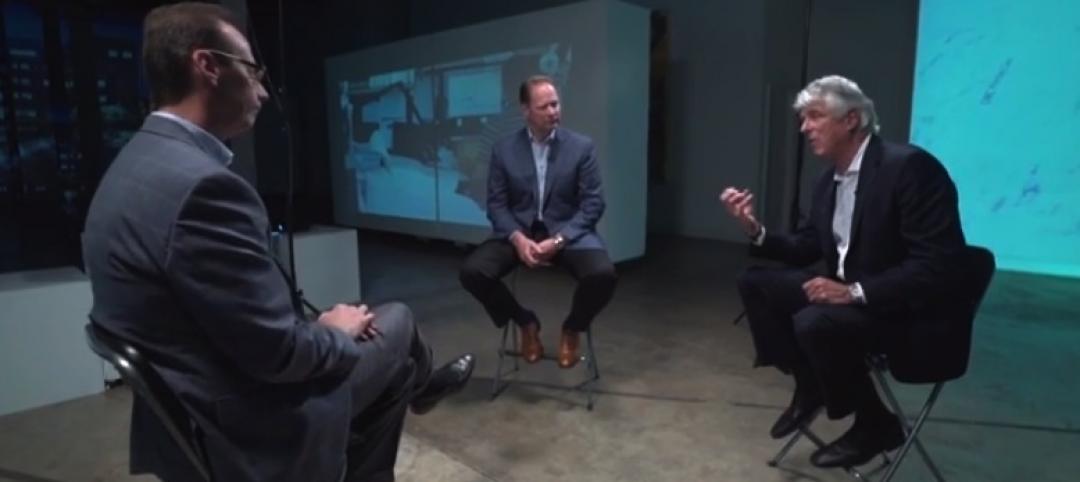Rochester, Minn., home to the famed Mayo Clinic, is about to embark on what would be the largest economic development initiative in this state’s history.
The state government, the Mayo Clinic, and private investment partners are prepared to spend $6.5 billion on a 20-year plan whose goal is to elevate Rochester into a global biotech hub. The plan is also intended to rejuvenate Rochester’s downtown, promote open transit, and reconnect the city with its waterfront.
On April 23, the Board of Directors of the Destination Medical Center Corporation formally adopted the development plan for Destination Medical Center (DMC), which would be comprised of six districts spread across 550 acres. The vertical construction would support a diverse mixed-use environment that complements Mayo’s existing facilities, which already provide care for one million patients annually.
The state government, the Mayo Clinic, and private investment partners are prepared to spend $6.5 billion on a 20-year plan whose goal is to elevate Rochester into a global biotech hub. The plan is also intended to rejuvenate Rochester’s downtown, promote open transit, and reconnect the city with its waterfront.
The six districts identified in the development plan include:
• The Heart of the City: The plan would convert the downtown area into a place of “connected urban experiences” that build off of the city’s existing walkable attributes, with enhanced areas and mixed-use buildings
• Discovery Square: Steps from Mayo Medical School, this would be the address for the expansion of science, research, tech, and entrepreneurism;
• Downtown Waterfront: This would be located where the Zumbro River and Second Street intersect. It would be a cultural and historical center, and provide live-work opportunities;
• Central Station: A nexus of transportation for the downtown area, with an intermodal transit station that is incorporated into mixed-use development;
• UMR and Recreation Area: On the south edge of downtown, this location would encompass the University of Minnesota-Rochester campus and Soldier’s Memorial Field; and
• St. Mary’s Place: A new public space in the downtown’s western corner.
Peter Cavaluzzi, FAIA, Principal and Board Member for Perkins Eastman, this project’s lead designer, thinks The Heart of the City will be the most critical component, and have the biggest impact, early on. “The first phase of every large-scale project has to be bold enough to have an impact, but at the same time be small enough that it can be achieved.”
Perkins Eastman says the initial phase will start at the city’s 1st Street and 1st Avenue, in the middle of Peace Plaza, where a grand dining terrace will span the Avenue and connect to the historic Chateau Theater.
A breakdown of Destination Medical Center shows that it would have 6.8 million sf of healthcare facilities, 1.02 million sf of biotech, 310,000 sf of offices, a 1,380-room hotel, 2,850 units of residential, 354,000 sf of educational space, and 117,000 sf of transit, which would include 22,850 new parking spaces. Fast Company reports that there is also a possibility of a rail link between Rochester and Minneapolis, 90 miles away.
Rochester officials see this project as a way for their city to get out from under the shadow cast by the Minneapolis-St. Paul metroplex. DMC could also give Mayo Clinic a leg up on other healthcase hubs like Cleveland Clinic and Johns Hopkins that are all vying for what’s known as medical “tourists,” affluent foreign patients seeking the best treatment available.
Lisa Clarke, DMC’s executive director, estimates that this development would create between 25,000 and 40,000 jobs over 20 years, plus significantly more tax revenue.
Fast Company reports that $6 billion of the project’s cost would be raised from the private sector, and state and local taxpayers would contribute $585 million. Foreign companies, many with ties with Mayo Clinic, are expected to provide much of the private funding.
The Destination Medical Center, though, is controversial. For one thing, the plan calls for the downtown area to be “winterized” with skywalks, heated sidewalks, and underground passageways. There’s nothing in the plan that stipulates construction of affordable housing (which could be a real problem if, as estimated, this urban development project causes Rochester’s population to double from its current 111,000 people). And some residents fear that local cultural structures, like the public library and downtown theater, could ultimately be destined for the wrecking ball.
Related Stories
| Dec 29, 2014
New mobile unit takes the worry out of equipment sterilization during healthcare construction [BD+C's 2014 Great Solutions Report]
Infection control, a constant worry for hospital administrators and clinical staffs, is heightened when the hospital is undergoing a major construction project. Mobile Sterilization Solutions, a mobile sterile-processing department, is designed to simplify the task. The technology was named a 2014 Great Solution by the editors of Building Design+Construction.
| Dec 29, 2014
HealthSpot station merges personalized healthcare with videoconferencing [BD+C's 2014 Great Solutions Report]
The HealthSpot station is an 8x5-foot, ADA-compliant mobile kiosk that lets patients access a network of board-certified physicians through interactive videoconferencing and medical devices. It was named a 2014 Great Solution by the editors of Building Design+Construction.
BIM and Information Technology | Dec 28, 2014
The Big Data revolution: How data-driven design is transforming project planning
There are literally hundreds of applications for deep analytics in planning and design projects, not to mention the many benefits for construction teams, building owners, and facility managers. We profile some early successful applications.
| Dec 28, 2014
AIA course: Enhancing interior comfort while improving overall building efficacy
Providing more comfortable conditions to building occupants has become a top priority in today’s interior designs. This course is worth 1.0 AIA LU/HSW.
| Dec 2, 2014
Nonresidential construction spending rebounds in October
This month's increase in nonresidential construction spending is far more consistent with the anecdotal information floating around the industry, says ABC's Chief Economist Anirban Basu.
| Dec 1, 2014
How public-private partnerships can help with public building projects
Minimizing lifecycle costs and transferring risk to the private sector are among the benefits to applying the P3 project delivery model on public building projects, according to experts from Skanska USA.
| Nov 25, 2014
Emerging design and operation strategies for the ambulatory team in transition
As healthcare systems shift their care models to be more responsive to patient-centered care, ambulatory care teams need to be positioned to operate efficiently in their everyday work environments, write CannonDesign Health Practice leaders Tonia Burnette and Mike Pukszta.
| Nov 20, 2014
Lean Led Design: How Building Teams can cut costs, reduce waste in healthcare construction projects
Healthcare organizations are under extreme pressure to reduce costs, writes CBRE Healthcare's Lora Schwartz. Tools like Lean Led Design are helping them cope.
| Nov 18, 2014
5 big trends changing the world of academic medicine
Things are changing in healthcare. Within academic medicine alone, there is a global shortage of healthcare professionals, a changing policy landscape within the U..S., and new view and techniques in both pedagogy and practice, writes Perkins+Will’s Pat Bosch.
| Nov 14, 2014
Haskell acquires FreemanWhite, strengthens healthcare design-build business
The combination expands Haskell’s geographic presence by adding FreemanWhite’s offices in Chicago, Charlotte, Nashville, and San Diego. FreemanWhite will retain its name and brand.

















